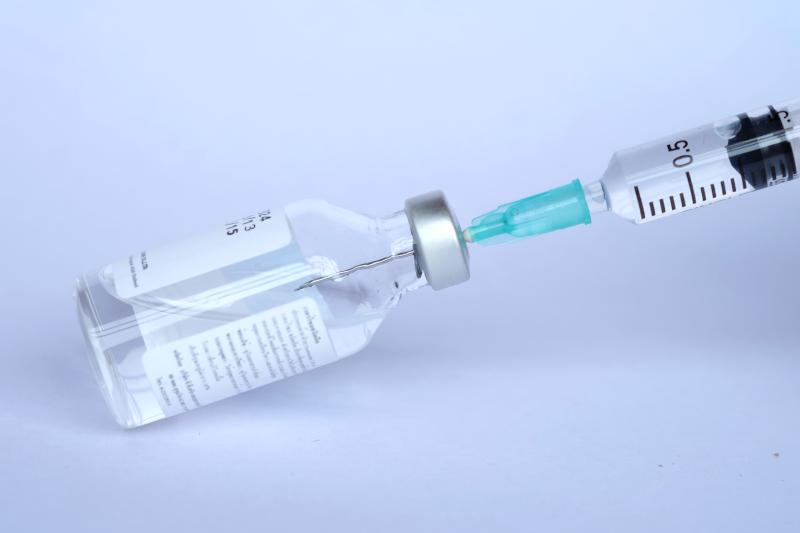Pneumococcal polysaccharide vaccine shields older patients from adverse CV events





The 23-valent pneumococcal polysaccharide vaccine (PPSV23), used to protect against 23 types of bacteria that cause pneumococcal disease, appears to have wider benefits—that is, reduce the risks of adverse cardiovascular (CV) events and mortality especially in older adults, a study has found.
Vaccination with PPSV23 of older individuals “would not only provide protection against invasive pneumococcal disease and community-acquired pneumonia due to Streptococcus pneumoniae but also prevent CV events that could lead to early death,” according to the investigators.
“Newer evidence has shown coronary artery disease to be inflammatory in nature, and since respiratory pathogens, such as influenza and S. pneumoniae, also activate macrophages, lymphocytes and cytokines, it is plausible that they could trigger myocardial infarction (MI), heart failure, and stroke,” the investigators said. [Lancet Infectious Dis 2010;10:83-92; Am J Respir Crit Care Med 2015;191:739-745; Eur Heart J 2017;38:334-337]
They summarized evidence from 18 studies (14 cohort and four case-control) exploring the impact of PPSV23 on CV events (eg, MI, stroke, congestive heart failure, and acute coronary syndrome) and/or mortality (all-cause or CV-specific). These studies were conducted in North America (n=8), Asia (n=4), Europe (n=5), and Australia (n=1). Overall study quality assessments, based on the Newcastle Ottawa scale, ranged from fair to good.
The total population consisted of 716,108 participants (aged 18–86 years), with the follow-up duration ranging from 4 months to 11 years. Random-effects regression analysis indicated that compared with nonreceipt, PPSV23 vaccination lowered the risk of any CV event (risk ratio [RR], 0.91, 95 percent confidence interval [CI], 0.84–0.99; I2, 74.64 percent; p<0.0001), especially MI (RR, 0.88, 95 percent CI, 0.79–0.98; I2, 75.4 percent; p<0.0001). [Int J Infect Dis 2020;doi:10.1016/j.ijid.2020.07.038]
When stratified by age, PPSV23 conferred the greatest protection among individuals aged >65 years. The RRs were 0.94 for any CV event (95 percent CI, 0.89–0.99; I2, 26.2 percent; p=0.19) and 0.93 for MI (95 percent CI, 0.88–0.99; I2, 31.0 percent; p=0.20). These benefits were not seen in the younger population.
There were also risk reductions observed for all-cause mortality (RR, 0.78, 95 percent CI, 0.68–0.88; I2, 70.4 percent; p<0.001) and CV-specific death (RR, 0.92, 95 percent CI, 0.86–0.98; I2, 0.0 percent; p=0.57) among vaccinated individuals vs nonvaccinated controls.
“Sensitivity analyses of the main endpoints showed the results remained robust after the removal of outliers,” the investigators said. “No publication bias was found, and sources of heterogeneity were mainly associated with age and follow-up duration in all the analyses.”
They also noted that PPSV23 was not very effective at preventing stroke, a finding that may be attributed to the low number of studies reporting on the outcome. But overall, the present data are consistent with reports from two previous meta-analyses, which, however, were both smaller in scope. [Open Heart 2015;2:e000247; Eur J Prev Cardiol 2015;22:1185-1199]
“[N]one of the meta-analyses, including ours, found vaccine benefit when the results were stratified for those under 65 years of age, for any of the outcomes, be it any CV event, MI, stroke, or mortality,” the investigators said.
The null effect of PPSV23 on CV events in the younger population may be explained by the generally healthier nonvaccinated controls who did not have major CV risk factors as opposed to the vaccinated group, as well as the inclusion of patients who had received the vaccine up to 5 years prior to the study commencement, the investigators pointed out. These could have led to residual confounding and the possibility of missing an effect when it might have been present.
Finally, the current meta-analysis included studies reporting on patients receiving both PPSV23 and influenza vaccines at the same time, although the studies adjusted for influenza in their analyses, they said. “As such, our results should be interpreted with caution as the effect may be related to influenza or a combination of both vaccines, rather than PPSV23 only.”